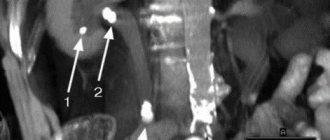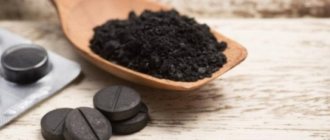The causes of the development of chronic pharyngitis may be:
- improper treatment of acute pharyngitis
- chronic tonsillitis
- chronic diseases of the nose and paranasal sinuses (sinusitis, sinusitis)
- long-term use of vasoconstrictor drops
- irritants, dust, smoke, smoking and alcohol abuse
- diseases of internal organs (cholecystitis, pancreatitis, chronic gastritis and intestinal dysbiosis)
- nasopharyngitis
According to the localization of the process, it is customary to distinguish:
- mesopharyngitis
- nasopharyngitis
- hypopharyngitis
By type, chronic pharyngitis is divided into:
- simple (catarrhal) pharyngitis
- hypertrophic (granular) pharyngitis
- atrophic or subatrophic pharyngitis
Most often, the symptoms of the disease appear after hypothermia of the body, which is why in everyday life nasopharyngitis is often called a cold.
Different types of disease require different therapeutic methods:
- Catarrhal
- Hypertrophic
- Atrophic
- Subatrophic
Simple (catarrhal) pharyngitis
With catarrhal pharyngitis
the patient complains of
sore throat, sore throat when swallowing
, a feeling of a “lump” in the throat and a dry cough. The mucous membrane of the pharynx is red with mucopurulent discharge.
When suffering from catarrhal pharyngitis, frequent gargling with alkaline solutions and lubrication of the mucous membranes with Lugol's solution or protargol are recommended.
To achieve a lasting and rapid effect, it is necessary to combine the use of local drug treatment with laser therapy.
The use of a course of light therapy with a therapeutic laser allows you to restore the protective and antibacterial functions of the oropharyngeal mucosa. For frequent exacerbations of pharyngitis, the use of 3-5 sessions of photodynamic therapy is indicated.
Catarrhal form is the most common
A new approach to the treatment of chronic diseases of the pharynx
The relevance of the search for new methods of treating chronic diseases of the pharynx (pharyngitis) is beyond doubt. The incidence rate among adults and children, according to our data, is 78% and is steadily growing.
The causes of chronic diseases of the pharynx are very diverse. Among them, the most common infectious factor is microbial, viral and fungal infections. This is explained, on the one hand, by the low resistance of the patient’s body, and on the other, by the irrational, often independent, use of antibiotics and corticosteroids. The latter have become widely used in the form of topical endonasal sprays in patients not only with an allergic history. The search for new treatment methods consists mainly in the development of antimicrobial drugs, while most often we are talking about combined lesions of the pharynx. The domestic immunomodulator Gepon should be recognized as a fundamentally new drug with a combined etiopathogenetic effect.
The drug Gepon (registration certificate No. 000015/04-2001), belonging to the group of immunomodulators, increases the effectiveness of immune defense against infections, treatment and prevention of opportunistic infections caused by bacteria, viruses or fungi. The active component of Gepon is a synthetic tetradecapeptide of the formula Thr-Glu-Lys-Lys-Arg-Arg-Glu-Thr-Val-Glu-Arg-Glu-Lys-Glu.
Gepon has interferon-inducing activity and induces the synthesis of a- and b-interferons in a wide range of doses. The effect of the drug on lymphocytes does not cause polyclonal activation of divisions, expression of CD69 and polyclonal synthesis of cytokines. The effect of Gepon on lymphoid cells is the induction of receptors for cytokines (in particular, IL2), a pronounced increase in the response to other activation signals. Gepon induces the production of MIF cytokines and L-selectins by T cells, which enhance the activity of granulocytes and cause selective chemotaxis of macrophages. Thanks to the administration of the drug, the content of CD4+-, CD8+-lymphocytes, as well as NK cells is normalized, the content of activated T-lymphocytes and neutrophil granulocytes increases, and the production of antibodies to infectious agents relevant to these patients is enhanced.
The purpose of this work is to study the clinical effectiveness of local use of Gepon for the treatment of patients with chronic pharyngitis (during periods of exacerbation and remission).
Our study involved 28 patients (10 men and 18 women) aged from 15 to 75 years, suffering from chronic pharyngitis for 5-25 years.
Based on the condition of the pharyngeal mucosa, subatrophic pharyngitis was diagnosed in 16 patients, atrophic - in 5 and hypertrophic - in 7 patients. Subatrophic and atrophic pharyngitis predominated among women (16 people). The vast majority of patients complained of sore throat, sore throat, tickling, dry mouth, foreign body sensation and viscous mucus on the back wall.
When examining the oropharynx in patients with subatrophic and atrophic pharyngitis, it was determined: the mucous membrane of the pharynx is dry, “varnished,” injected with vessels with single follicles. On the back wall of the throat, viscous mucus was sometimes visible, draining from the nasopharynx. In patients with hypertrophic pharyngitis, hypertrophy of lymphoid tissue in the form of granules and lateral ridges was detected.
All patients underwent determination of the biocenosis of the pharynx, the indicators of which were impaired in all cases. At the same time, damage to the pharynx caused by fungi of the genus Candida in association with microbial flora was noted in 19 cases, and only by coccal flora - in 9 cases. Previously, all the patients we observed were repeatedly and unsuccessfully treated with various rinses and oroseptics: pharyngosept, Bioparox, Septolete, Coldrex Plus, etc.
The method of using the drug consisted of irrigating all parts of the pharynx with a 0.04% aqueous solution of Gepon using the Rosa ultrasonic irrigation and cavitation apparatus. Before using Gepon, the mucous membrane of the mouth, nose and pharynx was irrigated with saline. The procedures were performed once a day with an interval of one day; three procedures were performed per course.
When examining patients after treatment, a pronounced effect was noted. The disappearance of signs of inflammation was achieved in almost all patients. Only in two patients, who had very strong inflammatory phenomena before treatment, hyperemia of the mucous membrane of the posterior pharyngeal wall remained after the course of therapy, which required extending the course of treatment to five procedures. It must be said that these patients, shortly before the start of treatment, experienced an exacerbation of gastritis or gastric ulcer.
Such a pronounced clinical anti-inflammatory effect was accompanied by positive dynamics of microscopic studies, which was revealed when re-determining the biocenosis of the mucous membrane of the posterior pharyngeal wall. The positive changes turned out to be quite persistent - when examining patients a month after treatment, a relapse of the disease was detected in only two patients. These patients underwent a second course of treatment, after which a lasting positive result was obtained. Consequently, the clinical and etiological effectiveness of Gepon was 93%. None of the patients who took part in the study experienced any side effects.
Thus, we can conclude that the immunomodulator Gepon, when applied topically (irrigation of the mucous membrane of the oropharynx using the Rosa apparatus), has a pronounced clinical anti-inflammatory effect and allows achieving clinical and etiological cure in 93% of patients with chronic pharyngitis.
Hypertrophic pharyngitis
For hypertrophic pharyngitis
The patient's complaints are similar to those with the catarrhal form of the disease, but in this case
there is more mucous discharge and it is more viscous
, which causes discomfort, since it is necessary to constantly cough up, which can provoke an attack of vomiting.
With this type of pharyngitis, there are lymphoid accumulations (groups of follicles) on the mucous membrane of the pharynx, which are pronounced.
In case of large accumulation and increase in size, these follicles turn into granules, and the disease is designated as granulosa chronic pharyngitis.
For hypertrophic pharyngitis, alkaline gargling is also recommended; inhalations with essential oils of medicinal herbs (sage, chamomile and eucalyptus) are also useful.
Hypertrophic granulosa pharyngitis
has a characteristic symptom - a tickling sensation in the throat, its other symptoms are similar to those of hypertrophic pharyngitis.
Treatment of granulosa pharyngitis
can be therapeutic and surgical
Therapeutic
– similar to the treatment of catarrhal chronic pharyngitis.
Surgical
the intervention is carried out using a radio wave or laser beam. During surgery, the granules themselves are removed, but to completely cure the pathology, therefore, after removal of the granules, drug treatment is still required.
The patient should stop smoking.
Causes of pharyngitis
The causes of pharyngitis are conventionally divided into infectious and non-infectious.
The infection causes the development of an acute form of the disease. About 70-80% of acute pharyngitis is due to viral pharyngitis. The causative agents of viral pharyngitis are most often rhinoviruses, adenoviruses, influenza virus, etc. Bacterial flora (streptococcal flora, staphylococcal, Haemophilus influenzae, etc.) causes acute pharyngitis in 10-15% of cases. The remaining share belongs to fungal pharyngitis, the causative agent of which is often fungi of the genus Candida.
Non-infectious factors that more often provoke a chronic inflammatory process in the pharynx include:
- gastrointestinal diseases (for example, gastroesophageal reflux disease);
- chronic diseases of the nasal cavity and paranasal sinuses (rhinitis, sinusitis);
- chronic diseases of the nasopharynx (for example, chronic tonsillitis, adenoids);
- dental problems (eg, tooth decay);
- hypothermia of the pharyngeal mucosa (for example, during a long conversation in the cold);
- eating too hot, cold food/drinks and spices;
- smoking, including passive smoking;
- alcohol abuse;
- negative effects on the mucous membranes of dust, gassed, polluted air;
- allergic reactions (to dust, animal hair and other irritants);
- uncontrolled use of vasoconstrictor drops and nasal sprays flowing from the nasal cavity along the back wall of the pharynx;
- injuries to the pharyngeal mucosa;
- weak immunity;
- problems with hormones.
As you can see, pharyngitis is a multifactorial disease. Acute pharyngitis develops most often due to pathogenic microflora, chronic pharyngitis - due to prolonged action of the irritant on the pharyngeal mucosa or untreated acute pharyngitis.
Atrophic pharyngitis
Atrophic pharyngitis is the final stage of chronic pharyngitis. In addition, this disease can occur independently against the background of dystrophic diseases of the gastrointestinal tract.
With atrophic pharyngitis, the mucous secretion becomes very viscous and dries into crusts, which cause significant discomfort to the person - they are located in the nasopharynx, from where they are released in fragments or whole casts.
With atrophic pharyngitis, the mucous membrane of the pharynx is dry and pale, blood vessels are clearly visible through it, lymphoid granules consist of scar connective tissue.
The pharyngeal reflex may completely disappear, which indicates that atrophic pharyngitis affects the nerve endings.
Treatment of atrophic pharyngitis is long-term, its effectiveness depends on the degree of atrophy, the general condition of the body and the cause that led to the occurrence of this pathology.
Atrophic pharyngitis
has two directions in treatment - general and local.
Local treatment
atrophic pharyngitis is aimed at increasing the activity of the glandular apparatus of the pharyngeal mucosa, which should lead to increased production of mucus and an increase in reparative biologically active substances in it.
General treatment
atrophic pharyngitis is aimed at increasing immunity.
Self-medication will not help. It is ineffective and dangerous
Treatment
Treatment of pharyngitis is aimed at eliminating the factor that caused the disease. In the case of bacterial pharyngitis, this is achieved with the help of antibiotics (including locally: gargling, irrigation of the tonsils and back of the throat with aerosols, physiotherapeutic methods), and in the case of pharyngitis caused by prolonged inhalation of smoke or irritants - by using personal protective equipment or change of place of work. Treatment for all cases of pharyngitis requires smoking cessation. Any drug treatment for pharyngitis should be prescribed and carried out under the supervision of the attending physician.
Main symptoms of atrophic rhinitis
The progression of the disease leads to a significant deterioration in a person’s condition and a decrease in quality of life. This pathology is accompanied by the following manifestations:
- heavy breathing and nasal congestion;
- scanty viscous discharge from the nasal cavity;
- feeling of dryness and burning;
- the appearance of crusts, when removed, bleeding occurs;
- decreased sense of smell up to complete disappearance;
- insomnia;
- lack of appetite;
- hearing impairment.
During the examination, the otolaryngologist will notice characteristic deviations from the normal state of the nasal mucosa, which will acquire a pale pink color, its structure will become dry and dull with yellow-green crusts.
If you start atrophic rhinitis, it can develop into ozena - a foul runny nose. The extreme stages of the atrophic process are characterized by:
- thinning of the mucous membrane,
- reduction in the number of cells,
- damage to the nervous system.
The following pathological processes occur in the nasal cavity:
- ciliated tissue is converted into flat tissue,
- blood vessels become inflamed,
- bone tissue is replaced by fibrous tissue.
A deformation of the nose occurs; its shape begins to resemble a duck’s. This disease is considered severe and requires immediate treatment.
In this table we consider the symptoms of various types of atrophic rhinitis.
| Type of rhinitis | Symptoms |
| Simple atrophic rhinitis |
|
| Subatrophic rhinitis | The nutrition of the nasal mucosa is impaired, it dries out and crusts form on it. Patients are bothered by burning and itching in the nasopharynx, and olfactory sensitivity worsens. |
| Infectious atrophic rhinitis |
Also characteristic are the following symptoms:
With further development of the pathology, asymmetry of the jaw and deformation of the nasal septum appear. |
| Ozena | Feeling of painful dryness and the presence of a foreign body in the nasal cavity, although breathing is free. Crusts appear that have a putrid odor. The stench from the nose is so strong that others try to avoid the presence of the patient. There is also a sharp decrease or absence of sense of smell, tinnitus and hearing loss |
Possible complications
Complications of pharyngitis occur due to the lack of proper treatment and untimely contact with an ENT doctor.
A careless attitude towards the disease can lead to other unpleasant diagnoses and conditions:
- chronic pharyngitis;
- peritonsillar abscess;
- laryngitis;
- tracheitis;
- bronchitis;
- pneumonia;
- otitis;
- lymphadenitis;
- complication on the heart, kidneys, joints (with bacterial pharyngitis).
Disease prevention
Preventive measures boil down to:
- strengthening the immune system;
- proper, balanced nutrition (limit the consumption of spicy, sour, salty foods);
- timely treatment of acute infectious and ENT diseases;
- maintaining oral hygiene, visiting the dentist for preventive purposes;
- giving up bad habits; avoiding passive smoking;
- avoiding contact with patients with ARVI and other infectious diseases.
To avoid chronic inflammation in the pharynx, there is no need to self-medicate. It is important to immediately contact an ENT doctor to prescribe the correct treatment.
Diagnostics
The diagnosis of pharyngitis and its forms is carried out by an ENT doctor. For an experienced otolaryngologist, making a diagnosis does not cause problems.
The doctor relies on the patient’s complaints, anamnesis of his life and health, as well as the results of a direct examination of the pharynx - pharyngoscopy.
Friends! Timely and correct treatment will ensure you a speedy recovery!
To confirm the presence of an inflammatory process in the body, the patient is sent for a general blood test. To determine the type of causative agent of the disease, a swab is taken from the throat. This will help you choose effective treatment.
It is important to differentiate pharyngitis from other infectious diseases in which pharyngitis is just a symptom (for example, diphtheria, scarlet fever, measles, tuberculosis, etc.)
Depending on the cause of pharyngitis, consultation with related specialists - an allergist, endocrinologist, gastroenterologist - may be required.
Pharyngitis in children
Pharyngitis in children is most often a consequence of infection with infectious microflora (influenza viruses, herpes, rhinoviruses). 70% of cases of acute pharyngitis in children are associated with a viral infection. Acute pharyngitis in childhood often does not occur independently, but against the background of other diseases - ARVI, measles, scarlet fever.
The chronic form of the disease in children is often a consequence of adenoids, tonsillitis, sinusitis, caries or problems with the gastrointestinal tract. There are many cases where chronic pharyngitis developed after removal of the tonsils in children of preschool age.
Acute pharyngitis in children lasts up to 1 month. Inflammation lasting 6 months or more, occurring with a series of exacerbations, is considered chronic.
Symptoms of acute pharyngitis in children are soreness, burning, and rawness in the throat. Body temperature can rise to 37.5°C. If pharyngitis develops against the background of acute respiratory viral infections and other infectious diseases, the temperature rises to high levels, a headache and signs of intoxication appear.
Children under one year of age experience pharyngitis most severely. Inflammation spreads to the nasal cavity and nasopharynx. Nasal breathing is impaired. Swelling of the pharyngeal mucosa can cause suffocation. The child cannot tell where exactly it hurts, and the parents are in a panic and do not know what to do.
There is no need to experiment with the child’s health. At the first signs of the disease, you should definitely consult an ENT doctor.






